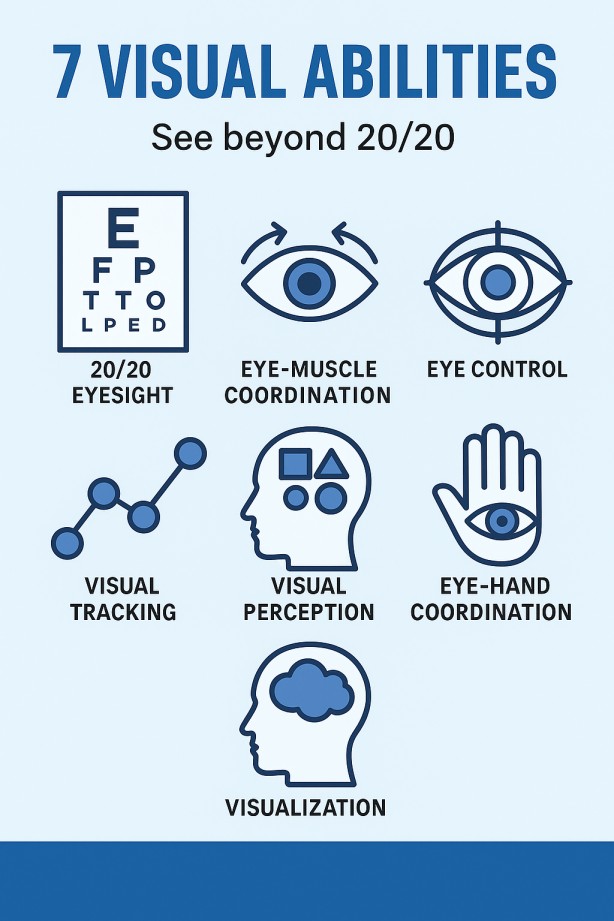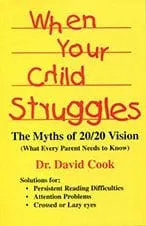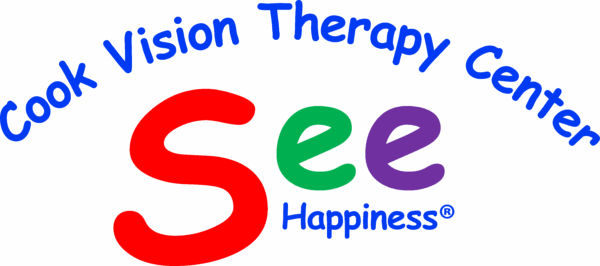7 Visual Abilities
Clear eyesight isn’t everything. At Cook Vision Therapy Center, we uncover the 7 visual abilities shaping Atlanta’s success—from sports to screen time. See beyond 20/20.
What are the 7 Visual Abilities?
Tailored therapy programs address a range of vision-related challenges to improve visual skills and enhance quality of life.
Cook Vision Therapy Center identifies seven essential visual abilities beyond just 20/20 eyesight, including eye-muscle coordination, eye control, visual tracking, visual perception, eye-hand coordination, and visualization, which are crucial for effective vision and overall daily success. Tailored therapy programs address a range of vision-related challenges to improve visual skills and enhance quality of life.

1. 20/20 Eyesight
20/20 eyesight means you can see letters on a standard eye chart as clearly as someone with “normal” vision at 20 feet. However, this common metric—often tested at Marietta clinics like WellStar Kennestone Hospital—doesn’t guarantee functional vision for daily tasks.
What 20/20 Doesn’t Guarantee:
- Sustained Focus: Reading or screen work without eye strain (a frequent issue for Cobb County students).
- Depth Perception: Safe night driving on Atlanta highways like I-75.
- Comfort: Freedom from vision-related headaches, even with updated glasses.
Why Marietta Patients Need More:
At Cook Vision Therapy Center, serving Metro Atlanta for 40+ years, we assess 6 critical visual abilities beyond 20/20—skills ignored in routine exams. For example, a Marietta high schooler may ace an eye chart but struggle to track text due to poor convergence.
2. Eye-Muscle Coordination: Why Marietta Patients Struggle with Focus
Your eyes rely on 14 muscles working in sync, controlled by the brain, to maintain clear, comfortable vision. When coordination falters (common in Cobb County students and professionals), symptoms like double vision, eye strain, or drifting eyes (strabismus) emerge.
Local Impact of Poor Coordination:
- Reading & Learning: Marietta students may lose focus during homework due to muscle fatigue.
- Sports & Driving: Reduced 3D vision affects performance in East Cobb Little League or night driving on Atlanta’s I-75.
- Severe Cases: Untreated issues risk permanent amblyopia (“lazy eye”), requiring specialized therapy.
How Cook Vision Therapy Helps:
With 40+ years serving Metro Atlanta, our Marietta clinic uses personalized exercises to retrain muscle-brain communication. For example, a Smyrna office worker regained screen comfort after 8 weeks of therapy targeting convergence insufficiency.
3. Eye Control
Eye contact is used for “keeping our eyes on the ball” or maintaining eye contact during conversations. When Eye Control is inaccurate, seeing is inaccurate. Our Eye Control is a direct measure of how vision is affecting our attention.
4. Visual Tracking
We use the term Visual Tracking to include how quickly and accurately we move our eyes across a line of print. During reading, poor Visual Tracking causes loss of place, confusing one word with another, careless errors, and difficulty breaking words down into their parts.
5. Visual Perception: How Marietta Students & Artists Process the World Differently
Visual perception is the brain’s ability to interpret shapes, patterns, and relationships, like an artist capturing Marietta’s Kennesaw Mountain landscapes or a child confusing “b” and “d” in Cobb County classrooms. Weaknesses here impact learning, work, and daily tasks.
Local Challenges of Poor Visual Perception:
- Academic Struggles: Difficulty recognizing sight words (e.g., Atlanta’s “Read Right” literacy programs).
- Everyday Tasks: Adults misreading GPS directions on GA-400 or mismanaging spreadsheets.
- Creative Limits: Aspiring artists in Marietta’s Art Station classes may struggle with spatial relationships.
Cook Vision Therapy’s Solution:
For 40+ years, our Marietta clinic has addressed perception gaps with tailored exercises. For instance, a Smyrna third grader improved reading fluency by 70% after 12 weeks of symbol discrimination drills.
6. Eye-hand Coordination
We can divide our ability to get our eyes to guide our hands into “little” coordination and “big” coordination. We need “little” coordination to copy sentences and to keep words equally spaced and on the line. We need “big” coordination to throw or catch a ball or to guide a steering wheel. The “big” type of eye-hand coordination is also very much linked with balance, general coordination, and 3D Vision.
7. Visualization
Visualization is sometimes called “seeing with the mind’s eye.” If visualization is good, a child or adult can “see” words in the mind to spell them. They can “see” the story when they are reading. They can picture their goals in their minds. They can picture the consequences of their actions. Visualization allows us to learn from the past and plan for the future.
Strong Visual Abilities are Crucial for Daily Success
At Cook Vision Therapy Center, we believe that strong visual abilities are crucial for success in daily activities and overall well-being. Whether you or your child is facing challenges with reading, learning disabilities, or specific vision disorders, our tailored therapy programs are designed to meet each individual’s unique needs. Contact us today for a free phone consultation to learn more about how we can help improve your visual skills and enhance your quality of life. Visit our Marietta office or explore our resources online to discover the difference expert vision care can make.
Why Are These Visual Abilities Critical Beyond 20/20 Vision?
While 20/20 eyesight measures clarity at a distance, it ignores six other essential visual abilities crucial for success in academics, sports, and daily life. These skills form the foundation of functional vision, impacting:
-
Academic performance: Reading fluency, math comprehension, and writing require eye tracking, visual perception, and visualization skills.
-
Athletic success: Sports demand eye-hand coordination, depth perception, and rapid tracking of moving objects.
-
Daily safety: Driving, screen use, and navigation rely on peripheral awareness, sustained focus, and spatial judgment.
-
Quality of life: Weaknesses in these areas lead to headaches, frustration, fatigue, and reduced confidence.
Key Signs You or Your Child May Need Vision Therapy
Watch for these common symptoms of underdeveloped visual abilities:
-
Frequent headaches/eye strain: Especially after reading or screens.
-
Reading struggles: Skipping lines, slow comprehension, or losing place.
-
Clumsiness: Poor depth perception (bumping into objects) or coordination.
-
Avoidance of close work: Fatigue during homework or office tasks.
-
Visual memory issues: Trouble recalling maps, diagrams, or spelling.
Parents, educators, and adults should seek a functional vision evaluation if these persist despite “normal” eye exams.
FAQs
-
What are the 7 visual abilities beyond 20/20 eyesight?
The seven critical skills include eye-muscle coordination, eye control, tracking, perception, eye-hand coordination, visualization, and sustained focus—key for Atlanta’s reading, sports, and daily tasks.
-
How does vision therapy improve eye-muscle coordination?
-
Can adults benefit from vision therapy near Atlanta?
-
Where is vision therapy for dyslexia available in Cobb County?
-
Why does my child struggle with reading despite 20/20 vision?
-
Will insurance cover vision therapy in Georgia?
-
How long does therapy take to fix strabismus?
-
What are signs of poor visual perception in Marietta kids?
-
Are there vision therapy options for seniors in Marietta?
-
How do I know if my child needs therapy?
-
Can vision therapy help with learning disabilities?
-
Who benefits most from vision therapy for visual abilities?
-
What should I expect during a vision therapy session?
Check Out Our Resources
Dr. Cook’s Publications:
- Authored books VISUAL FITNESS and WHEN YOUR CHILD STRUGGLES.
- Published articles in top optometric journals.
- His article “Eyesight, infinity and the human heart” was voted “Best Non-Technical Article” by the Association of Optometric Editors.





